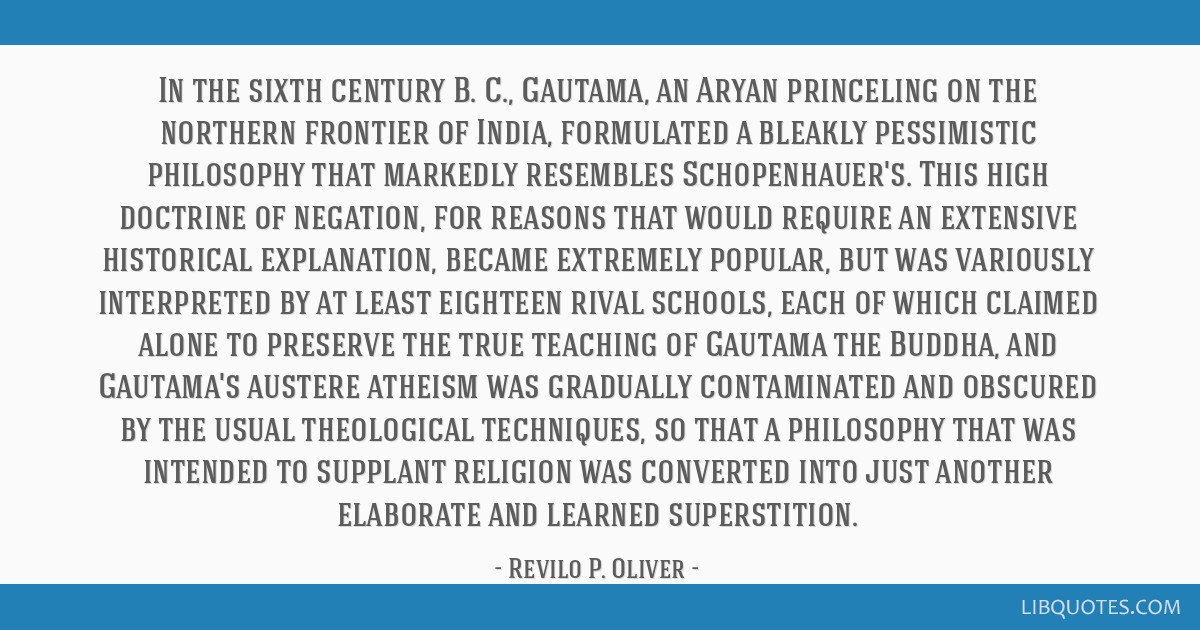In the sixth century B. C., Gautama, an Aryan princeling on the northern frontier of India, formulated a bleakly pessimistic philosophy that markedly resembles Schopenhauer's. This high doctrine of negation, for reasons that would require an extensive historical explanation, became extremely popular, but was variously interpreted by at least eighteen rival schools, each of which claimed alone to preserve the true teaching of Gautama the Buddha, and Gautama's austere atheism was gradually contaminated and obscured by the usual theological techniques, so that a philosophy that was intended to supplant religion was converted into just another elaborate and learned superstition.
"On the Roof of the World", Liberty Bell magazine (December 1987) - Religion























